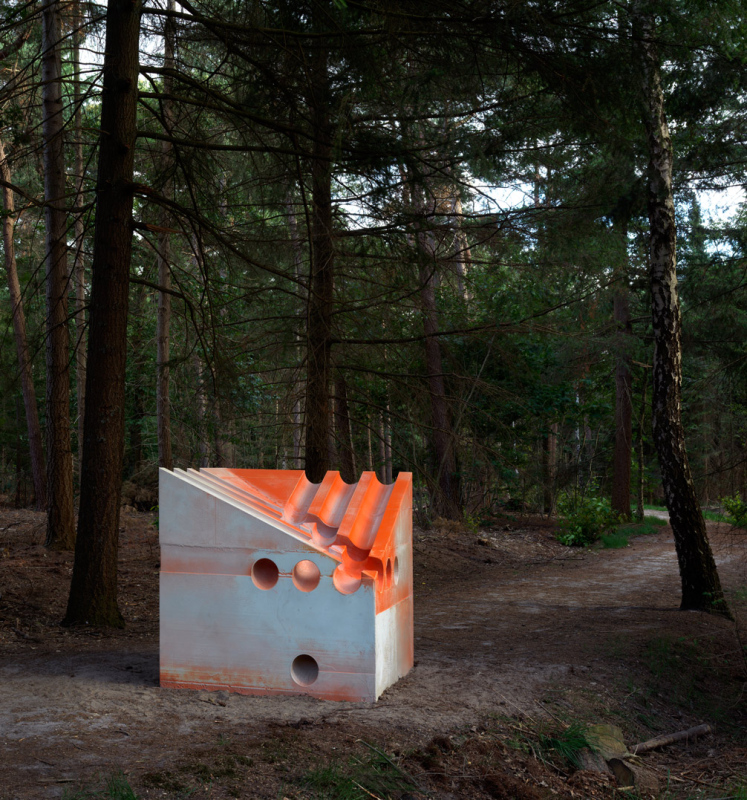-
My Room is in the Corner, 2018
160 x 160 x 160 cm
High density polystyrene, epoxy coating, epoxy spray paintHYBRIDS, group exhibition, Lustwarande, Tilburg, NL
Photography: Gert Jan van Rooij
-
Evita Vasiljeva – My Room Is in the Corner (2018)
The art of Evita Vasiljeva (b. Riga, Latvia, 1985, lives and works in Riga) comes about through a reaction to the space for which it is made. The work, which encompasses sculpture, video and performance, often develops out of her fascination with the location and the associations it evokes. In the case of Hybrids, this was her first encounter with De Oude Warande, when it constantly looked as if it were about to start raining. However, there was hardly any water to be seen. The many drainage ditches in the park were as dry as a bone. The thought of rain in this dry setting gave her the idea of a robust sculpture of intersecting drainage channels, running downwards at an angle.
Vasiljeva deliberately makes art that is close to reality. An unwitting passer-by could easily think that it was an industrial object that had been left behind for being useless or perhaps too heavy to move. It is precisely this lack of clarity about the object in relation to its surroundings that the artist investigates through her practice. The title of this work, My Room Is in the Corner, is closely connected to this notion. Every word has meaning but the logic seems strange. The quote is supposedly from Ludwig Wittgenstein, the Austrian–British philosopher, who made an important contribution to the development of linguistic philosophy and the foundations of logic. Wittgenstein used the sentence as an example to show that words acquire meaning only in a context. The context is the complete environment in which something gains its meaning. This can be surrounding text but also a situation or the people involved.
In her practice, physical work and intellectual exertion occur simultaneously and usually in situ. This results in objects in which the production process is visibly present and which often appear unfinished or used, as if they themselves have had – or could have – a function in a construction process. The artist also planned to take this approach for Hybrids. Vasiljeva chose a material and production method that could only be produced in a workshop, although still involving great physical exertion. The artist called her work ‘a physical expansion of thoughts’. That made this sculpture the physical manifestation of an artist’s thoughts in a park on a rainy day.
Evita Vasiljeva ©

